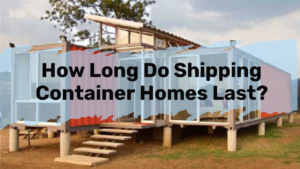Tiny homes on wheels have been famous for years due to their high mobility and affordability. It even comes with all the basic necessities that a minimalist homeowner would ever need. The question is: how much does it really cost to build a tiny home on wheels?
This question is usually answered with a base price. However, building one could have added costs especially if you want to add high-tech features and extra interior design perks. To cut back on the confusion, we will break down the costs to ensure that opting for this alternative living won’t cost you more than you bargained for.
What Is A Tiny Home On Wheels?
A tiny home on wheels is usually referred to as a Recreational Vehicle (RV) living space. It is a portable abode that’s perfect for those who are seeking to downsize their lifestyle but still have some basic features like a bathroom, a kitchen, and sleeping quarters.
Its best feature is its mobility. You can park a tiny home on wheels on an existing residential lot as an Accessory Dwelling Unit (ACU) or drag it with you during a vacation trip as an added RV living space.
Tiny homes on wheels are also incorporated with windows and a door making the unit just like any other standard American home. One common issue about owning a tiny home on wheels is knowing where you can legally park it.
Another issue is complying with height regulations which may be different for each city in the United States. Generally, most ordinances allow 16 to 32 feet high tiny homes along national roads. They may also be 10 feet wide.
Knowing these limitations allow you to engage in a worry-free trip through national roads without getting an oversize permit.
Another important factor to consider is matching the weight of your tiny abode with the weight capacity of the RV. The most recommended height for mobile homes is at 24 feet.
If the unit is larger than that, it would probably be heavier and more difficult to transport from one place to another.
Also, if you wish to travel with your abode more than once a year, it may be practical to get a smaller tiny home so that you would only need a regular truck to pull it to all of the different locations.
How Affordable Is A Tiny Home On Wheels?
The average tiny house costs at least $10,000 up to $40,000 or more. To know the difference between the types of tiny houses on wheels within this price range, these values are more or less accurate than most estimates.
- Trailer. Trailers cost at least $3,500 up to $5,500. The rate is ranked from good quality to the best.
- Windows. You would also need to purchase windows in compliance with building codes. They would cost you around $500 up to $6,000 depending on size and how they would be incorporated into the tiny home on wheels foundation.
- Metal Roofing. This keeps your abode free from environmental hazards. This is optional since some shipping container homes are used as is and without a roof. For those whose models require the same, you would need to spend around $500 up to $3,000.
- Insulation. One of the most important features of tiny houses is insulation. This regulates the pressure and temperature of your interiors. You can either choose between cellulose, fiberglass, or mineral wool. They usually cost around $500-$6,000.
Adding all of these factors together, the cheapest total price of building a tiny home on wheels would be $13,420 assuming that you’re only doing the basics or the bare minimum.
This minimum price does not include labor and that needs to be factored in. You may want to pay more for something that will last longer and will need less maintenance in the long run.
Worst Quality Tiny Homes On Wheels
Let us break down why opting for the cheapest price is a bad idea. First, you must ensure that the walls are sturdy enough to withstand changing climates, environmental hazards, and rusting.
You wouldn’t want the walls of your home crumbling down if it encounters the slightest pressure now, would you?
Some tiny homes on wheels units on the market today use recycled roofs as their wall cladding. This is a terrible idea. Not only will they rust easily, they are also more susceptible to discoloration, bumps, wear and tear.
Other unit owners even use low-quality wood as wall cladding which is an even worse idea especially when you frequent rainy areas.
The material is not immune to the ravages of water and would rot quickly. This would force you to replace them more frequently which would actually cost you more.
If you wish to live in a tiny home on wheels, there are several things that you must consider: quality of materials, durability, longevity, functionality, mobility, and best of all – comfort.
It would be useless to opt for a tiny house if you’re not receiving the same amount of relief you experience from living in a standard home. Luckily, there are providers that prioritizes quality, durability, and comfort – everything that you need to experience when opting for a mobile home.
The Bottom Line
Building a tiny home on wheels could be a tiring feat for a do-it-yourselfer. There are at least 17 items that you need to incorporate into your home and, at the same time, ensure that it’s safe, durable, functional, complete, and properly styled.
Do your research, know what you want. And if living in a tiny home on wheels is what you are looking for price around and find the Tiny Home that is right for you!


